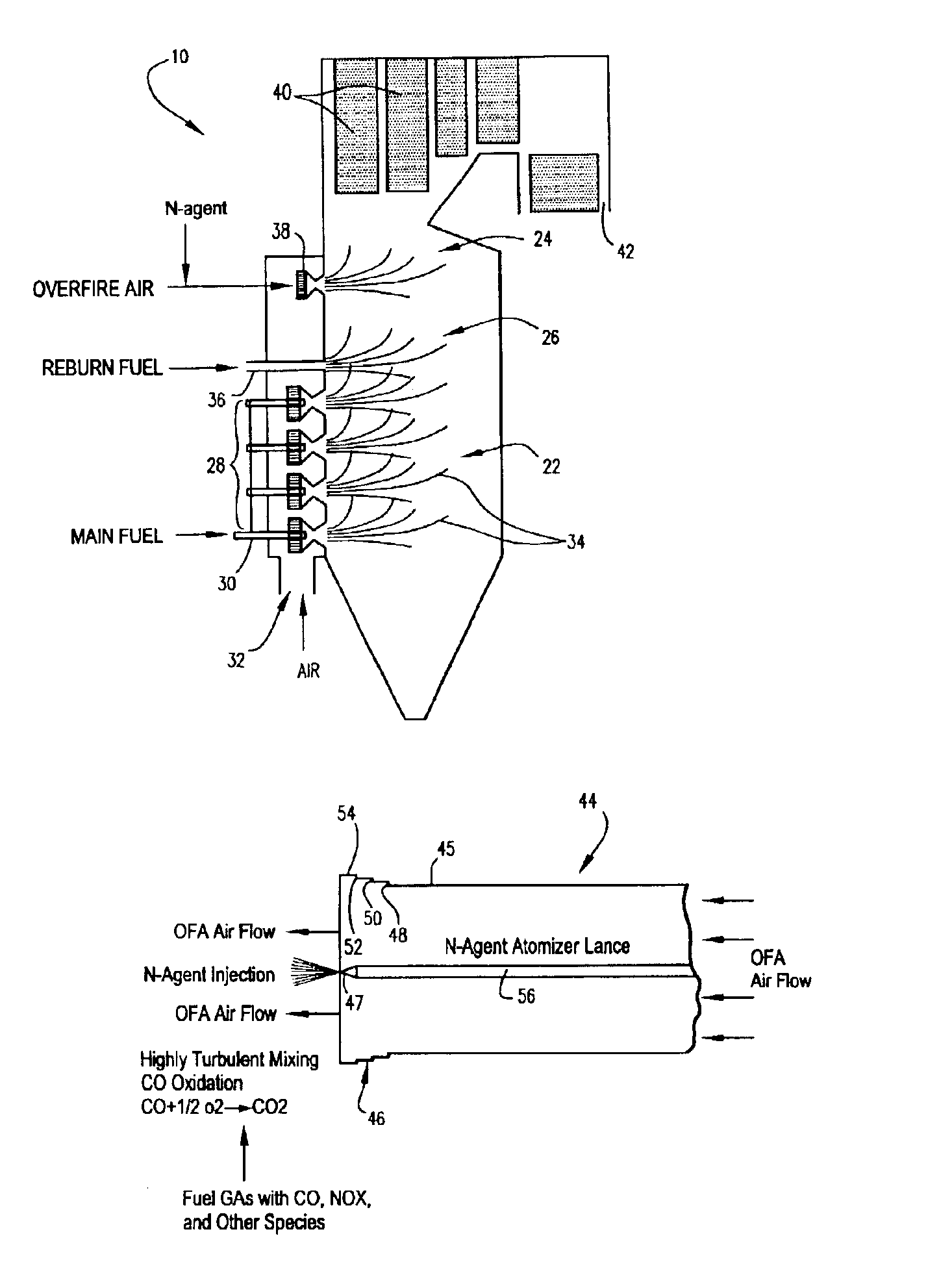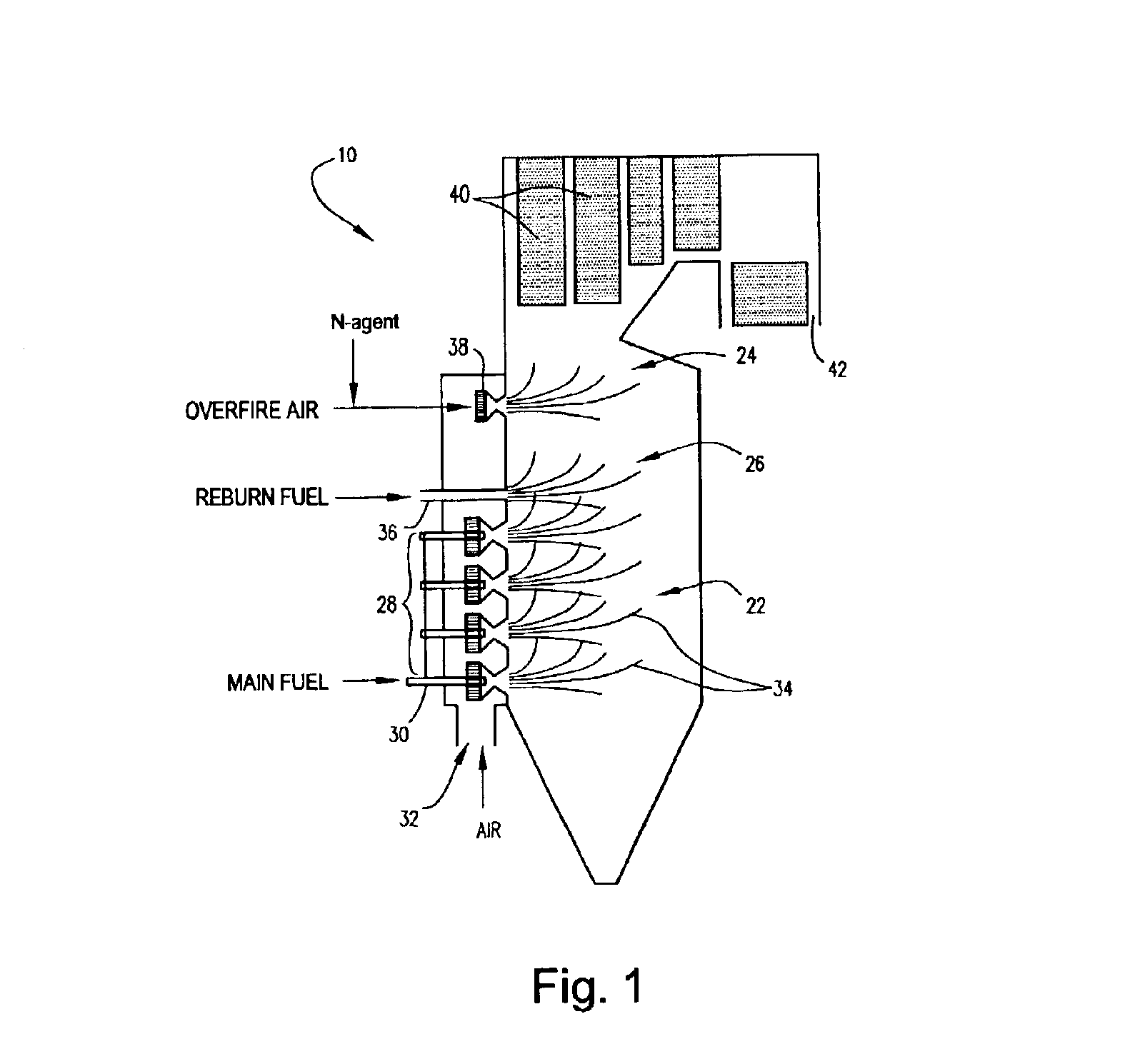Step-diffuser for overfire air and overfire air/N-agent injector systems
a technology of injector system and diffuser, which is applied in the direction of combustion type, combustion using lump and pulverulent fuel, separation process, etc., can solve the problems of reducing the maximum velocity of application, reducing the mixing efficiency of the system, and reducing the airflow velocity requirement and pressure inventory requirement. , to achieve the effect of improving local co oxidation, enhancing small-scale mixing, and improving mixing efficiency
- Summary
- Abstract
- Description
- Claims
- Application Information
AI Technical Summary
Benefits of technology
Problems solved by technology
Method used
Image
Examples
Embodiment Construction
Referring now to FIG. 1, there is a schematic representation of a fossil fuel-fired combustion device 10 such as used in a fossil fuel-fired boiler or furnace. combustion device 10 includes a combustion zone 22 and a burnout zone 24. The combustion device 10 may also include a reburning zone 26 between the combustion and reburning zones. The combustion zone 22 is equipped with at least one, and preferably a plurality of main burners 28 which are supplied with a main fuel such as fossil fuel through a fuel input 30, and with air through an air input 32. The main fuel is burned in the combustion zone 22 to form a combustion flue gas 34 that flows upwardly from the combustion zone 22 toward the burnout zone 24, a direction referred to herein as a “downstream” direction. When the optional reburning zone 26 is used, typically about 75%-85% of the total heat input is supplied through main burners 28, and the remaining 15%-25% of heat is supplied by injecting a reburn fuel such as natural ...
PUM
 Login to View More
Login to View More Abstract
Description
Claims
Application Information
 Login to View More
Login to View More - R&D
- Intellectual Property
- Life Sciences
- Materials
- Tech Scout
- Unparalleled Data Quality
- Higher Quality Content
- 60% Fewer Hallucinations
Browse by: Latest US Patents, China's latest patents, Technical Efficacy Thesaurus, Application Domain, Technology Topic, Popular Technical Reports.
© 2025 PatSnap. All rights reserved.Legal|Privacy policy|Modern Slavery Act Transparency Statement|Sitemap|About US| Contact US: help@patsnap.com



